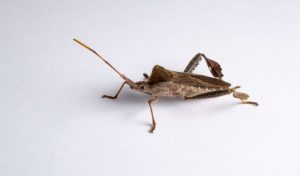 Weird Stuff
Weird Stuff  Weird Stuff
Weird Stuff  Our World
Our World 10 Archaeological Discoveries of 2025 That Refined History
 Weird Stuff
Weird Stuff 10 Fascinating Facts You Might Not Know About Snow
 Miscellaneous
Miscellaneous Top 10 Things Crypto Was Supposed to Change & What Actually Did
 History
History 10 Huge Historical Events That Happened on Christmas Eve
 Music
Music 10 Surprising Origin Stories of Your Favorite Holiday Songs
 History
History 10 Less Than Jolly Events That Occurred on December 25
 Weird Stuff
Weird Stuff 10 Funny Ways That Researchers Overthink Christmas
 Politics
Politics 10 Political Scandals That Sent Crowds Into the Streets
 Weird Stuff
Weird Stuff Ten Bizarre Facts About The Doge Meme
 Weird Stuff
Weird Stuff 10 Weird Things People Used to Do at New Year’s
 Our World
Our World 10 Archaeological Discoveries of 2025 That Refined History
 Weird Stuff
Weird Stuff 10 Fascinating Facts You Might Not Know About Snow
Who's Behind Listverse?

Jamie Frater
Head Editor
Jamie founded Listverse due to an insatiable desire to share fascinating, obscure, and bizarre facts. He has been a guest speaker on numerous national radio and television stations and is a five time published author.
More About Us Miscellaneous
Miscellaneous Top 10 Things Crypto Was Supposed to Change & What Actually Did
 History
History 10 Huge Historical Events That Happened on Christmas Eve
 Music
Music 10 Surprising Origin Stories of Your Favorite Holiday Songs
 History
History 10 Less Than Jolly Events That Occurred on December 25
 Weird Stuff
Weird Stuff 10 Funny Ways That Researchers Overthink Christmas
 Politics
Politics 10 Political Scandals That Sent Crowds Into the Streets
 Weird Stuff
Weird Stuff Ten Bizarre Facts About The Doge Meme
10 Animals Who Amputate Parts of Their Body
Nature is red in tooth and claw. It can be a vicious business trying to stay alive and pass on your genes in a world where vast numbers of other organisms are trying to eat or out-mate you. This has led to some dramatic adaptations being evolved over the course of history. Perhaps the most radical thing an animal can do is to lop off a part of its body in an attempt to survive.
Self-amputation, known as autonomy to biologists, seems extreme but does offer survival benefits in the right conditions. Even trapped humans have been known to cut off bits of their bodies if it is a matter of life or death.
Here are ten animals that give up a piece of themselves, willingly or unwillingly.
Related: Top 10 Animals With Creepy Behaviors
10 Lizard Tails
If you have ever picked up a lizard by the tail, you may have been given a surprise as you are left with just a wriggling tail in your hand as the rest of the lizard skitters away to safety. Losing a tail is no small sacrifice for a lizard. Tails help them to move and balance and are a store of fat they can draw on when food is scarce. So why, and how, do they drop their tails?
A tail is a great advantage to a lizard, but it is also a dangerous appendage. It is very easy for a predator to grab hold of it. If the lizard could not cut off its own tail, then they risk being pulled in and killed. By dropping the tail and having it continue to move after amputation, they escape their foe and confuse them.
Lizards have evolved several adaptations to help them lose their tail when needed but still have it securely fastened to their bodies. There are fracture lines in their spine to allow it to break cleanly off and microscopic structures that hold it in place. Luckily once the tail has been lost, however, it can be regenerated—leaving the lizard to live another day.[1]
9 Sea Cucumber Evisceration
Losing a tail is not the most dramatic case of self-amputation. That probably belongs to sea cucumbers. Under certain circumstances, they perform an act known as evisceration—which is just as serious as it sounds. When in peril, sea cucumbers can expel their internal organs. Some might call evisceration ‘shooting your guts out of your butts.’
Sea cucumbers are relatively simple organisms who spend most of their time shuffling across the ocean floor and feeding. They do not have a brain but a ring of nerves that performs basic functions. When threatened by predators, however, a complex series of changes occur, which soften the attachments of their organs, allowing them to be thrust out of their cloaca. The predator is then hit with a mass of, sometimes toxic and sticky, viscera, and the sea cucumber goes on its merry way.
If the cucumber escapes, then it can regrow all the missing organs and be none the worse for being gutted. Sometimes they will even eviscerate themselves when not threatened. If they are infested with parasites, sometimes it is just easier to abandon those organs and start again from scratch.[2]
8 Mating Spiders
For spiders, mating is notoriously dangerous, at least if you are a male. After mating, the females of several species have been known to turn on their lovers and eat them. This makes a certain amount of evolutionary sense. Once the male has passed on his genes, his role is done, and the female gets access to nutrients that will help her make eggs. But how does the dead male know other spiders won’t sneak in and mate after he is gone, making his sacrifice worthless? The solution is copulatory plugs.
The mating parts of female spiders are often observed to be blocked after mating. The males, and sometimes the females themselves, flood the opening with a fluid that hardens into a plug that stops other males from placing their sperm inside. Sometimes, however, it is more than fluid. Occasionally, the males will chew off their pedipalps, which work something like a penis, and leave it as a mechanical blockage in the female. This literal c*ck-block prevents other males from successfully mating.[3]
7 Spiny Mice Skin
Mice have been the workhorses of scientific research for decades. This is because they breed rapidly, share several traits with humans, and can be handled easily. This final aspect is not universal to all mice, however. The spiny mouse from Kenya does not like being handled roughly. If you pick one up, you might be left clutching just a patch of fur and the skin underneath it.
Spiny mice have very fragile skin that breaks easily. If a predator gets hold of them, they can detach large areas of it and escape. They can shed up to 60% of the skin on their backs in one go. Most remarkable, though, is that they are relatively unscathed by this. If you or I lost that much skin, then at best, we would face months of painful recovery and be in danger of life-threatening infections. Spiny mice can regrow their skin, fur, and even cartilage in a short period of time.
Studying spiny mice might allow scientists to treat skin regrowth in humans. They’ll just need to be handled carefully.[4]
6 Rodent Tails
Rodents and lizards may look very different, but when it comes to their tails, they are surprisingly similar. Both use their tails for the same reasons, and both lose their tails for the same reasons. Most rodents have fairly robust tails. Many people who handle rodents will pick them up by their tails because it is convenient and stops them from biting you. Some rodents, however, take being picked up by the tail as a threatening act and escape by amputating a bit of their tail.
Rodents do not go for full amputation of the tail. Instead, they just shed the skin which covers their tail, a gruesome act known as degloving. This leaves the vertebrae and muscles of the tail attached to the rodent, while the predator has just a mouthful of skin.
The cotton rat makes this move into a sort of art form. When grasped by the tail, it performs a sort of spin which helps to loosen the connections between the skin and the rest of the tail before it detaches.[5]
5 Insect Limbs

The leaf-footed cactus bug lives and feeds on the prickly pear cactus in North and Central America. Most people will hardly notice them, but they have fascinating and bloody lives. Males will defend their territories on a cactus and use their large back legs to fight with rivals. They need their legs, which makes it strange that they can choose to pull them off.
When an insect loses a limb, it may regrow it if it has another stage of molting to go through. Once they are adults, however, any part that is lost is gone for good. You might think that you want to hold on to your entire body in that case, but there are reasons the leaf-footed cactus bug ditches its limbs.
If a leg becomes trapped, then the bug faces the choice of either severing it or starving to death. If the limb is injured, then it might bleed to death or get an infection—in either case, amputation looks like a good deal. Even if a male loses one of the hind legs, it fights other males and does get a consolation prize. After losing a leg, the male’s testicles grow larger, making more sperm so that if it does mate with a female, it has more chance of fertilizing her eggs.[6]
4 Scorpion Tail (and Anus)
When you picture a scorpion, it is probably a fierce-looking arachnid with pincers and a stinging tail. Giving up one of the defining features is a pretty radical step for a scorpion, but some species can drop their tail when threatened. Unfortunately, though, they also lose their anus.
When an Ananteris scorpion is grabbed by the tail, there are three weak points at which the tail can break. The portion of the tail that is amputated continues to move and make stinging motions to confuse whoever has been brave enough to get near the stinger. The scorpion then flees, leaving the tail and part of its digestive tract behind. This is a serious sacrifice for the scorpion as without its tail, it can only catch small prey, and when the tail wound heals, it can no longer defecate.
The scorpions seem not to notice that they have lost their biggest weapon. When presented with prey, they continue to try and sting it though nothing happens. Surprisingly, they can survive months like this, which is why it is sometimes worth losing the tail. After amputation, the scorpions can still successfully mate and is able to pass on their genes.[7]
3 Bee Mating
Mating in the animal kingdom is less about romance than it is about whatever works to get your genes into the next generation. For male bees, life is purely about this. Male bees, known as drones, typically do not do much. They spend most of their lives in the hive and only leave to find a new queen to mate with. When they do, it can spark a frenzy as dozens of drones home in on an eligible female.
During the mating season for bees, you might see a host of drones pursuing the female through the air. When they catch up to her, they will grasp on and insert their endophallus into the female. Then all the blood in its body rushes into the endophallus with such force that it breaks off inside the queen and pumps all its sperm inside.
The rupturing of the drone’s genitals is sometimes accompanied by an audible pop that humans can hear. The drone’s whole life has built up to this moment of explosive ejaculation, but it lasts only a matter of seconds. The drone then falls backward off the female and dies immediately. The queen preserves the drone’s sperm in her body and will use it to fertilize all the eggs she will ever lay.[8]
2 Cephalopod Sex Arms
Aristotle wrote in the 4th century BC that octopuses have a fairly extraordinary way of mating. One of their tentacles acts like a penis. “This organ is sinewy, as far as the middle of the tentaculum, and they say that it is all inserted into the nostril of the female.” While Aristotle got some of it wrong (no one likes a penis up the nose), he got it partially right. This is how cephalopods mate, which was only rediscovered in the 19th century.
Male cephalopods have adapted tentacles called hectocotyli which are used to transport sperm to females. Sometimes this just involves inserting the tentacle into the right spot on the female, but sometimes, the male tears off his sperm-carrying tentacle and hands it to her.
Argonauts, the group of cephalopods that includes the nautilus, have a very special amputation of their sperm tentacles. Instead of placing the tentacle in the female or handing it to her, they detach it, and it swims away on its own to impregnate a female. The males had to evolve this technique because they are so much smaller than the females. It was easier to launch their penis-like arms at them to swim up to them.[9]
1 Sea Slug Decapitation
Decapitation tends to be fatal for most animals. We all need our heads, after all. For a couple of species of sea slugs, however, losing their head can be the best thing they do.
A researcher studying sea slugs in the lab one day noticed that one of the slugs had decapitated itself and was having a surprisingly good time. Despite losing all of its major organs, the head of the slug was still swimming around and was even seen to feed—though without a digestive tract, it was hard to know where the food was going. Even the now headless body continued to move around.
When looking more closely at the sea slugs, it was discovered that they have a clear breaking point just below their heads where the body can be cleanly detached. The best guess as to why they would do this is that when a sea slug is infected with parasites, it is easier just to regrow an entire body than struggle on with the parasites. The slugs are able to survive for some time without a stomach because they hijack the algae they feed on. The slugs incorporate the algae into their cells and use their chloroplasts to get energy from sunlight.[10]








